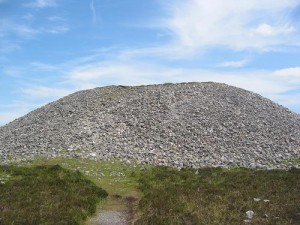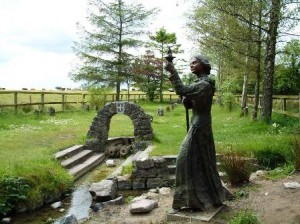Sometimes mis-readings can be productive. Although we are most often taught to read carefully and with studious detail to a poem’s particular poems, one of the most fascinating things about poetry—about its unconventional phrases and vague nature—is the way it catalyzes our minds’ wanderings.
 One example of productive mis-reading occurred earlier today when I was reading Idris Davies’ poem Do you remember 1926? and immediately considered it a poem about the Great Depression. As an English major roughly familiar with landmark dates, I quickly jumped to the conclusion that it contrasted the excessive highs of the Roaring 20s (the “summer of soups and speeches”, of “penny concerts” and “jazz-bands”) with the oppressive lows of the Wall Street Crash and the following Depression (the “swift disaster”). Such a reading is certainly plausible—except for the fact that the Stock Market Crash occurred in 1929.
One example of productive mis-reading occurred earlier today when I was reading Idris Davies’ poem Do you remember 1926? and immediately considered it a poem about the Great Depression. As an English major roughly familiar with landmark dates, I quickly jumped to the conclusion that it contrasted the excessive highs of the Roaring 20s (the “summer of soups and speeches”, of “penny concerts” and “jazz-bands”) with the oppressive lows of the Wall Street Crash and the following Depression (the “swift disaster”). Such a reading is certainly plausible—except for the fact that the Stock Market Crash occurred in 1929.
Chronology aside, the (incorrect) reading I extracted from Davies’ poem set my mind on an economic slant and made me realize how much money, power, and employment factor into the other Welsh poems we are reading. Another of Davies’ poems, Mrs. Evans, you want butter again, hardly hides its political and economic undertones when it pits Dan the grocer against Mrs. Evans, the “little woman” whose husband “strike[s]” and spits “fiery language” about the evils of communism.
On a slightly different tact, two of R.S. Thomas’ poems A Peasant and The Hill Farmer Speaks work to defend the importance of the Welsh shepherd, the archetype of the working man. In the first poem, the speaker—one who blatantly admits that “There is something frightening in the vacancy of [the peasant’s] mind”—insists on the famer’s ruggedness and durability, utilizing the military diction of “siege”, “attrition”, “fortress[es]” and “wars.” In the second, the famer gains even more power by directly addressing the reader and pleas for equality, saying “Listen, listen, I am a man like you.”
In both poets’ works, then, there appears a shared working class rhetoric. In focusing on the quotidian interactions of members of Welsh society, like those between the grocer and his customer or between the shepherd and his flock, the poets present the Welsh as a humble, blue-collar people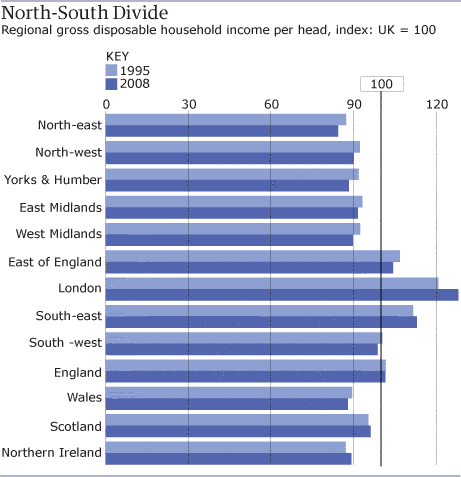 and suggest that economic activity (or lack thereof) is an integral aspect of the Welsh identity.
and suggest that economic activity (or lack thereof) is an integral aspect of the Welsh identity.
Such a reading, that the Welsh people are identifiable, at least partially so, by their lack of wealth, would seem a stretch if Wales were not actually one of the most economically depressed regions in the United Kingdom. Earlier this week, I came across an article in the Economist, a publication written in England, that discussed increasing regional disparities in income in the U.K. As they said so convincingly:
“The gap between Britain’s poorest regions (mainly in the north and Wales) and its richest (in the south-east) has widened for the past 20 years. It grew worse during the recent recession, and is likely to widen again as government budget cuts fall disproportionately on poorer regions. GDP per head in the poorest quarter of Britain’s regions is now lower than in the richest part of China.” (The Economist, “Gaponomics: Regional Income Inequality Has Risen in Many Countries. What Should Be Done About It?, March 10th, 2011, www.economist.com/node/18332806)
In short, parts of the United Kingdom are growing healthily while Wales is not. As seen in the chart from The Guardian (above right) , people in Wales have about sixteen percent less money to spend, on average, than those in the South-East, home of London’s bustling financial market. With such income disparities in mind, maybe we can begin to understand why Welsh poets feel the need to defend their working class roots. It is their reality.
See both articles here:
Economist Article –&– Guardian Article

 aristocratic, sexually-charged poems of Tennyson and the innovative, Modernist free verse of Eliot. In particular, two of Owen’s poems stick out in my mind as archetypes of his forceful and ironic treatment of the Great War: “Dulce et Decorum Est” and “Exposure.”
aristocratic, sexually-charged poems of Tennyson and the innovative, Modernist free verse of Eliot. In particular, two of Owen’s poems stick out in my mind as archetypes of his forceful and ironic treatment of the Great War: “Dulce et Decorum Est” and “Exposure.”
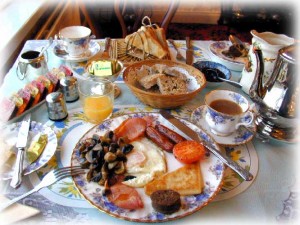
 One example of productive mis-reading occurred earlier today when I was reading Idris Davies’ poem Do you remember 1926? and immediately considered it a poem about the Great Depression. As an English major roughly familiar with landmark dates, I quickly jumped to the conclusion that it contrasted the excessive highs of the Roaring 20s (the “summer of soups and speeches”, of “penny concerts” and “jazz-bands”) with the oppressive lows of the Wall Street Crash and the following Depression (the “swift disaster”). Such a reading is certainly plausible—except for the fact that the Stock Market Crash occurred in 1929.
One example of productive mis-reading occurred earlier today when I was reading Idris Davies’ poem Do you remember 1926? and immediately considered it a poem about the Great Depression. As an English major roughly familiar with landmark dates, I quickly jumped to the conclusion that it contrasted the excessive highs of the Roaring 20s (the “summer of soups and speeches”, of “penny concerts” and “jazz-bands”) with the oppressive lows of the Wall Street Crash and the following Depression (the “swift disaster”). Such a reading is certainly plausible—except for the fact that the Stock Market Crash occurred in 1929. and suggest that economic activity (or lack thereof) is an integral aspect of the Welsh identity.
and suggest that economic activity (or lack thereof) is an integral aspect of the Welsh identity.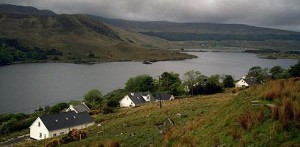
 masculine “farmhand”, couples fascinatingly with the erotically charged “steadily pulsing stream”, the relieved “grunt” of satisfaction, and the “pounding transistor” that “shakes / the Virgin on her shelf” to create a crisscrossing and complicated sexual dynamic in an otherwise straightforward celebration of rural life.
masculine “farmhand”, couples fascinatingly with the erotically charged “steadily pulsing stream”, the relieved “grunt” of satisfaction, and the “pounding transistor” that “shakes / the Virgin on her shelf” to create a crisscrossing and complicated sexual dynamic in an otherwise straightforward celebration of rural life.